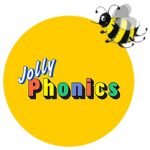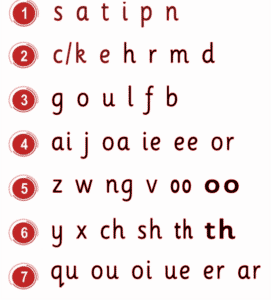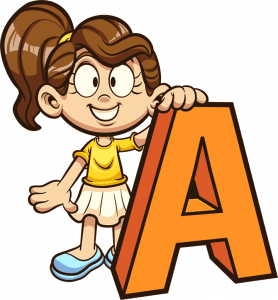What Is Jolly Phonics? How Does It Help Children Learn To Read?

Jolly Phonics has been around for a few decades, but it is still not clear what it is for many parents. There are two phases to the program, phase one and phase two, and each of them helps children very well to become independent readers. However, if you want to learn more about Jolly Phonics, read on to discover how it works and how you can get started.
At Jolly Reading, we teach Phonics, Advanced Phonics & Grammar
Jolly Phonics Phase 1:
Developed by Sue Lloyd, Jolly phonics is a systematic approach to teaching reading and writing. It uses synthetic linguistics to break words into their constituent phonemes and connect them to produce words. The programme is unique in that it teaches 42 different letter sounds in an order individual to the terms. This approach is based on five skills that all children need to become proficient readers and writers.
The first phase of phonics teaches your child to recognize and produce sounds. It focuses on their perception of sounds rather than their spelling. They are not introduced to all 42 sounds at once; they are trained to only a few in the beginning. This makes it necessary for children to see the letter and recognize the sound before they can write it. Some words in the Jolly Phonics curriculum are tricky, and blending makes them easier to read.
The last phase of Jolly Phonics focuses on tricky words. This means that children must learn to distinguish the sounds in a word, such as ‘too’. Kids will also be introduced to the main alternative spellings of the vowels. As children become familiar with these letters, the jolly phonics program will help them to identify and pronounce difficult words.
Jolly Phonics Phase 2:
In Phase 2 of the Jolly Phonics programme, children will continue to learn the basic sounds of letters and blend them into words. This is done by teaching children the 42 main letter sounds. They will also learn about digraphs, letter formation, and blending sounds. Children who complete the scheme will have the necessary skills to become proficient readers and writers. To help them in this process, they can use the Jolly Phonics Phase 2 resources.
During this stage, children are taught the sounds of the letters. Jolly Phonics Phase 2 provides all letter sounds from A to Z. One tricky sound is Q, introduced in Phase Three and addressed in Phase Three. Learning letter sounds is important because this is the first step in reading. As a result, children who start learning the alphabet in Phase 2 will have an easier time reading and writing.
The focus of Phase 2 is on sound perception, so the child does not encounter all 42 sounds at once. Initially, the child is only introduced to the sounds made by one letter. The child must recognize the letter, determine its sound, and make it correctly. Children will also learn to recognize letters and the correct way to write them. The final phase of the curriculum introduces tricky words. The curriculum is designed to help children become confident with these words and improve their spelling.
Jolly Phonics is a multi-sensory program for teaching English. It includes songs, storylines, and actions corresponding to each letter sound. In addition to leading the alphabet, the program also introduces 42 different sounds. English has 26 letters and 42 different sounds.
A single letter makes one sound, while two letters make different sounds. In Jolly Phonics, the 42 main letter sounds are taught in seven groups.
This program teaches children the alphabet and letter sound through a synthetic phonics approach. Children learn the letters and sounds by following a series of jolly phonics videos. The videos introduce the 42 letter says in seven groups. The phonic building blocks are divided into seven groups, and children begin by learning the easiest sounds.
Once the children have mastered the alphabet letters, they can move on to the harder ones. The program teaches children to blend the sounds and identify them by writing the corresponding letters.
The program is based on five key phonics skills:
Jolly Phonics also introduces the main alternative spellings of vowels. Each of these sounds is a phonic sound pronounced differently in different languages. Children exposed to Jolly Phonics show faster progress than children who were not taught Synthetic Phonics.
The program is effective for children of all abilities, and parents and teachers have praised it. If you’re looking for a fun and effective way to teach Phonics to your children, look no further than Jolly Phonics !
Jolly Phonics Song:
The Jolly Phonics song is a fun way to introduce letters and the sounds they make. The songs are based on a 42-letter sound chart that teaches kids the sounds of different letters. The song also includes actions that help kids learn the correct blend of words. Example(The words in this song begins with the letter ‘J’ and ends with ‘P’). The words are easy to blend when children know the right sounds for each letter.
Jolly Phonics is a synthetic phonics scheme that teaches English to children using JOLLY SONGS. Children learn the alphabet by identifying letter sounds and their corresponding letters.
The songs and actions help children develop their letter recognition skills and help them build words quickly. Using a Jolly Phonics song helps children remember letter sounds, which allows them to learn new words quickly.
There are many benefits to using Jolly Phonics, including the fun way it makes learning to read and write easier. The Jolly Phonics songs teach children the letter sounds for the 42 most common combinations in the English language. The songs and actions reinforce the letter sound in words. The songs also reinforce punctuation. Jolly Phonics also compliments the curriculum with Jolly Readers and Jolly Grammar.
Jolly Phonics Songs in Order:
Various audio & video clips with jolly phonics songs can be found on the internet. These songs are great for teaching children the alphabet. They are also great for preschoolers or adult learners. These songs are also free to download and listen to. The free files are available to download in mp3 format.
These jolly phonics songs in the order of the alphabet are part of the Jolly phonics program that teaches your child important phonemic awareness and the 42 letter sounds of the English language. The program includes alphabet song downloads for every letter of the alphabet. It’s also available for parents. The jolly phonics songs in order of the alphabet can be found on the software informer.
Jolly Phonics Tricky Words:
When teaching literacy, tricky words are an important part of the learning process. While the first step is to teach children to recognize and pronounce the phonemes that make up the English language, children can progress to reading and writing tricky words. This program introduces 72 tricky words and uses actions to help them learn how to read each one. The program’s multi-sensory approach is highly motivating for children and teachers alike.
Tough words in a story are often part of the phonic code. Because they do not have letters that match their sounds, kids often struggle to recognize them in written words. Common examples of tricky words are a swan, was, my, and are. Jolly Phonics is an innovative reading and writing program that introduces children to the letter sounds in a fun, sequential manner. Its engrossing stories allow children to learn these difficult words and develop a love for reading.
Jolly Phonics Digraphs:
One of the key aspects of learning to read is mastering the blending of consonant blends and digraphs. These are the letters and sounds that go together to form words. While this process is naturally automatic for adults, it is difficult for young children. If they are not aware of the letter sounds, they will lose track of the word and struggle to decode it. Jolly Phonics suggests methods for easy blends: children should pronounce the sound quickly to hear it clearly and say the first sound a little louder.
Jolly Phonics teaches children to distinguish the sounds in words that contain different digraphs. The letters ‘oo’ and ‘th’ are digraphs used in words with two sounds. Digraphs are represented by two different letters and have different sizes. Children must learn to differentiate between them, allowing them to recognize them in a word. This is made easier by engaging children with fun activities and games that help them learn new words.
Jolly Phonics uses a synthetic phonics method to teach children letter sounds. These letters are grouped into seven groups, and they take about a week to learn. They become familiar with the letter sounds and blend them to form words. This approach to literacy learning is split into two distinct stages. The phonics stage teaches children letter sounds, and the grammar stage teaches the structure of language, including spelling and punctuation.







